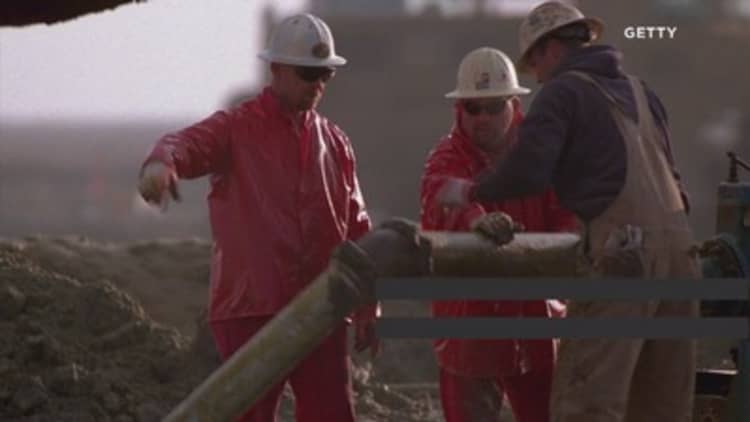
The United States is challenging Australia and Qatar as the world's largest exporter of natural gas, according to a new report by the International Energy Agency.
Global gas demand is expected to grow by 1.6 percent a year for the next five years, with consumption on track to hit almost 4,000 billion cubic meters by 2022. China is projected to account for almost 40 percent of growth.
"The U.S. shale revolution shows no sign of running out of steam and its effects are now amplified by a second revolution of rising LNG supplies," IEA Executive Director Fatih Birol said in a statement Thursday.
"Also, the rising number of LNG consuming countries, from 15 in 2005 to 39 this year, shows that LNG attracts many new customers, especially in the emerging world," Birol added.
The U.S. is already the world's largest producer of natural gas. The IEA estimated that by 2022 the country's production will be 890 bcm, more than a fifth of global gas output.
The IEA said the United States will challenge Qatar and Australia as the highest exporter by 2022 with more than half of the natural gas produced to be converted to liquefied natural gas for export.
In a bid to increase export demand, three major LNG terminals under construction on the Texan coast will double the number of U.S. ports currently in use.
Industry driving demand
Future demand will be driven by the industrial sector, according to the IEA, as its traditional use in power generation is trimmed by a growing mix of renewables and coal.
The report added that increased liquefaction capacity is coming into a market already well supplied, and the glut is driving down prices to interest new countries such as Pakistan, Thailand and Jordan.
But it warned that disruption to traditional routes of energy supply was a likely outcome of cheaper, export LNG, and highlighted the current diplomatic standoff involving Qatar and Saudi Arabia.
"Even in a well-supplied market, recent events remind us that gas security remains a critical issue," Birol said.


